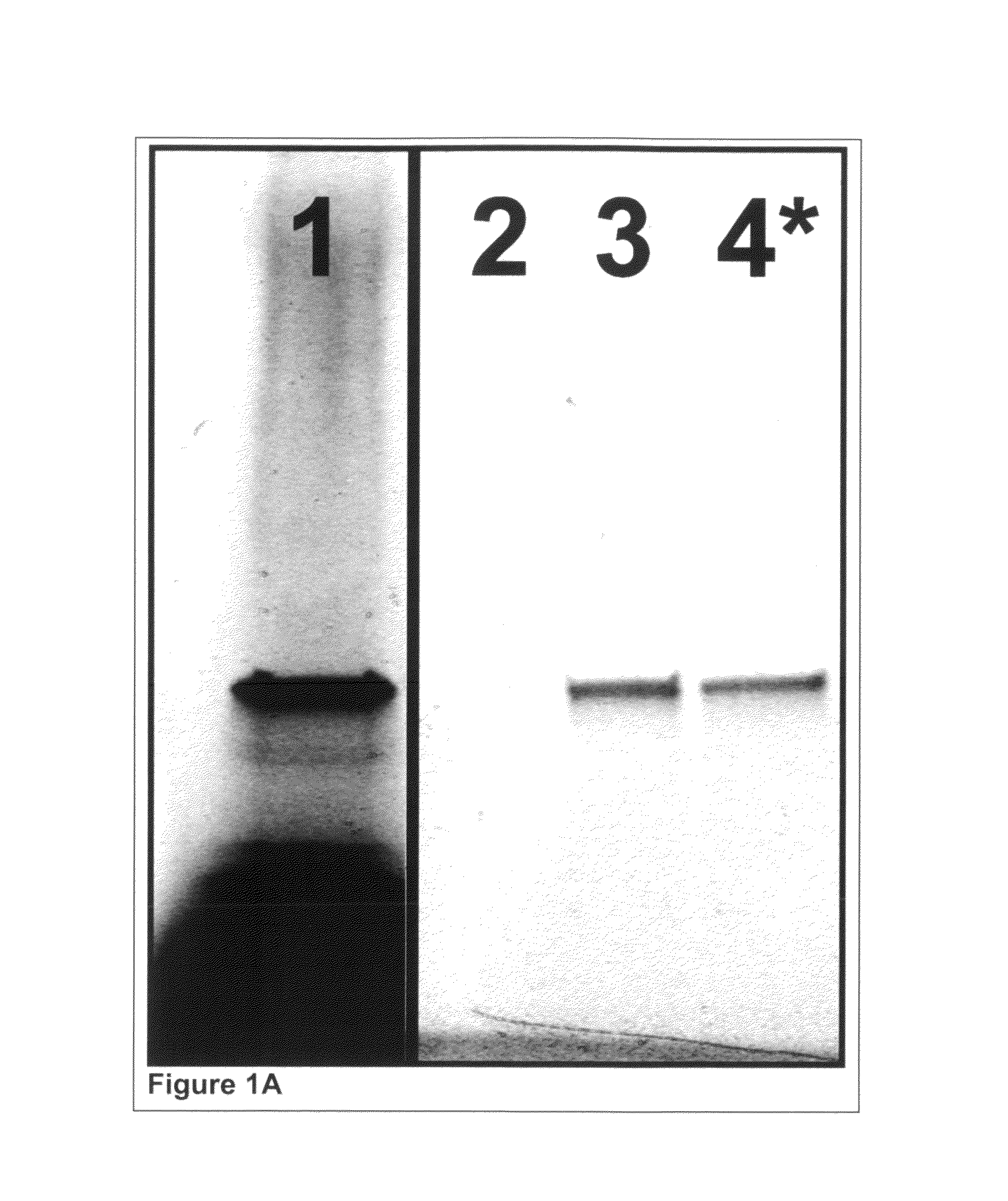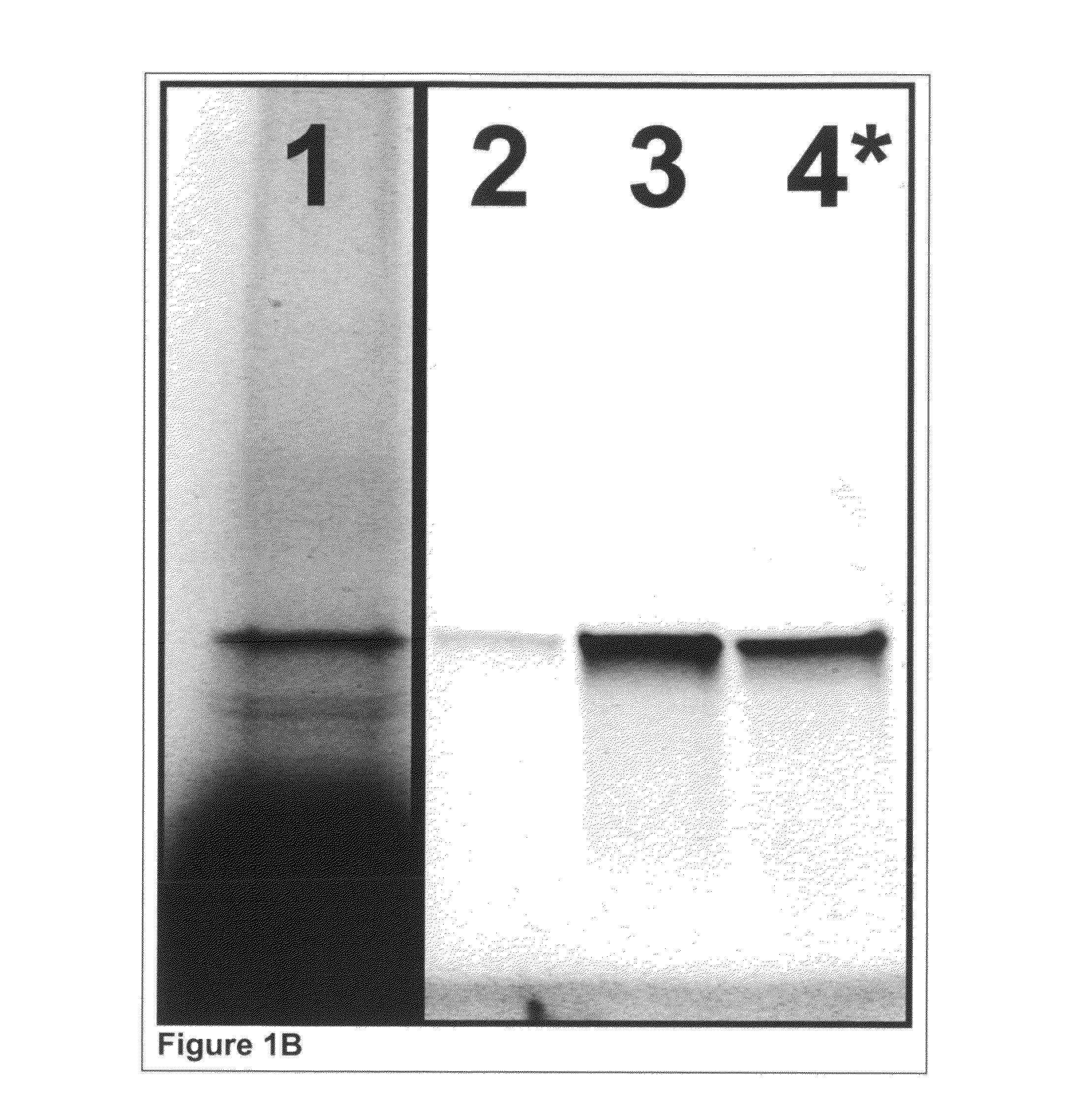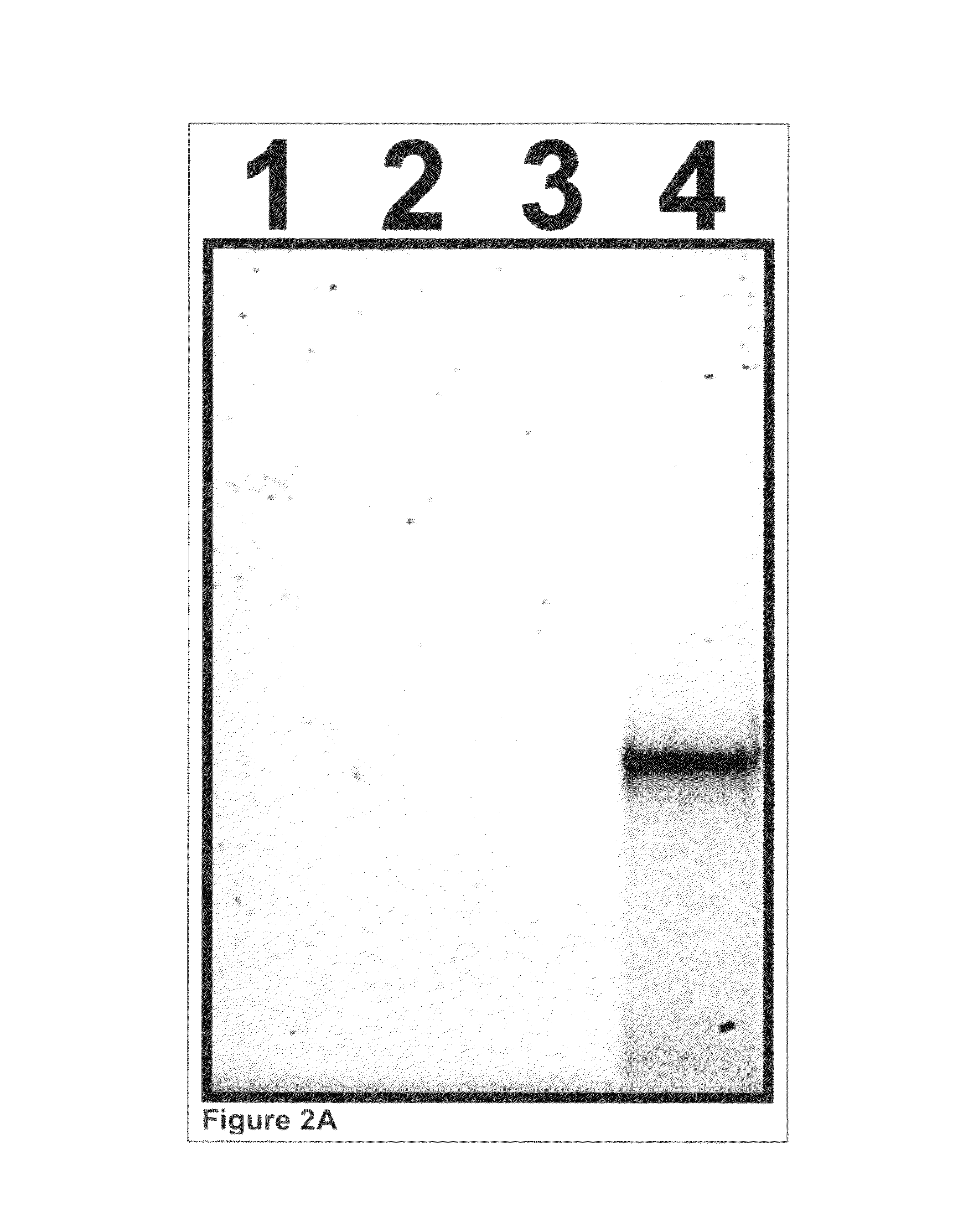Amplifying bisulfite-treated template
a template and bisulfite technology, applied in the field of biomolecule production methods and compositions, can solve the problems of large equipment capital expenditure, difficult production and/or high cost, and current methods suffer from various deficiencies, and achieve the effect of facilitating full multiplexing
- Summary
- Abstract
- Description
- Claims
- Application Information
AI Technical Summary
Benefits of technology
Problems solved by technology
Method used
Image
Examples
example 1
Isolation and Photo-Release of Protein Produced in a Cell-Free Expression System Using Incorporated PC-biotin
Cell-Free Expression and tRNA Mediated Labeling:
[0388]Glutathione-s-transferase (GST) was expressed in a cell-free reaction and co-translationally labeled using AmberGen's PC-biotin-tRNACOMPLETE (PC-biotin=photocleavable biotin) and BODIPY-FL-tRNALys misaminoacylated tRNA reagents. AmberGen's BODIPY-FL-tRNALys misaminoacylated tRNA and PC-biotin reagents are described in the scientific literature [Gite et al. (2003) Nat Biotechnol 21, 194-197; Olejnik et al. (1995) Proceedings of the National Academy of Science (USA) 92, 7590-7594]. Although not used in this Example, BODIPY-FL-tRNACOMPLETE is also used in later Examples instead of BODIPY-FL-tRNALys. “tRNALys” refers to a pure preparation of E. coli lysine specific aminoacyl tRNA that is conjugated to the BODIPY-FL or PC-biotin label at the ε-amine group of the amino acid side chain. “tRNACOMPLETE” refers to a complete mixture...
example 2
Isolation and Photo-Release of Protein Produced in a Cell-Free Expression System Using Photocleavable Antibodies
Preparation of a Photocleavable Antibody Affinity Matrix:
[0392]A “photocleavable” antibody (PC-antibody) is defined, in all Examples provided, as an antibody conjugated to a photocleavable chemical linker, in this case photocleavable biotin (PC-biotin), that mediates attachment of the antibody to a solid affinity matrix [in this case (strept)avidin coated beads] in a photo-reversible fashion. With proper light treatment, the antibody is photo-released from the solid affinity matrix, with the antibody intact and still bound to any antigen that was bound prior to photo-release.
[0393]400 μg of mouse monoclonal anti-HSV tag antibody (EMD Biosciences, Inc., San Diego, Calif.) at 1 μg / μL was dialyzed extensively against 200 mM sodium bicarbonate (no pH adjustment) and 200 mM NaCl. The resultant recovered antibody (˜200 μg at 0.3-0.4 μg / μL) was labeled using 20 molar equivalents ...
example 3
Purity of Proteins Isolated by Incorporated PC-Biotin and Photo-Released
Cell-Free Expression and tRNA Mediated Labeling:
[0397]Glutathione-s-transferase (GST) was expressed in a cell-free reaction as described earlier in Example 1 except that the Translation Dilution Buffer (TDB) was modified as follows: i) DTT was not used, ii) 4 mM cycloheximide was included to ensure the expression reaction is completely stopped and iii) 0.02% (w / v) Triton X-100 detergent was used as a carrier instead of BSA to avoid interference with purity analysis.
Isolation of Labeled Nascent Proteins and Photo-Release.
[0398]Isolation and photo-release of GST was performed as described earlier in Example 1 except that 0.01% (w / v) Triton X-100 detergent was used as a carrier in all buffers instead of BSA to avoid interference with purity analysis. Additionally, to ensure detection of all possible contaminants, the volume of buffer used during photo-release was reduced such that the isolated GST was concentrated ...
PUM
| Property | Measurement | Unit |
|---|---|---|
| acid | aaaaa | aaaaa |
| mass spectrometry | aaaaa | aaaaa |
Abstract
Description
Claims
Application Information
 Login to View More
Login to View More - R&D
- Intellectual Property
- Life Sciences
- Materials
- Tech Scout
- Unparalleled Data Quality
- Higher Quality Content
- 60% Fewer Hallucinations
Browse by: Latest US Patents, China's latest patents, Technical Efficacy Thesaurus, Application Domain, Technology Topic, Popular Technical Reports.
© 2025 PatSnap. All rights reserved.Legal|Privacy policy|Modern Slavery Act Transparency Statement|Sitemap|About US| Contact US: help@patsnap.com



